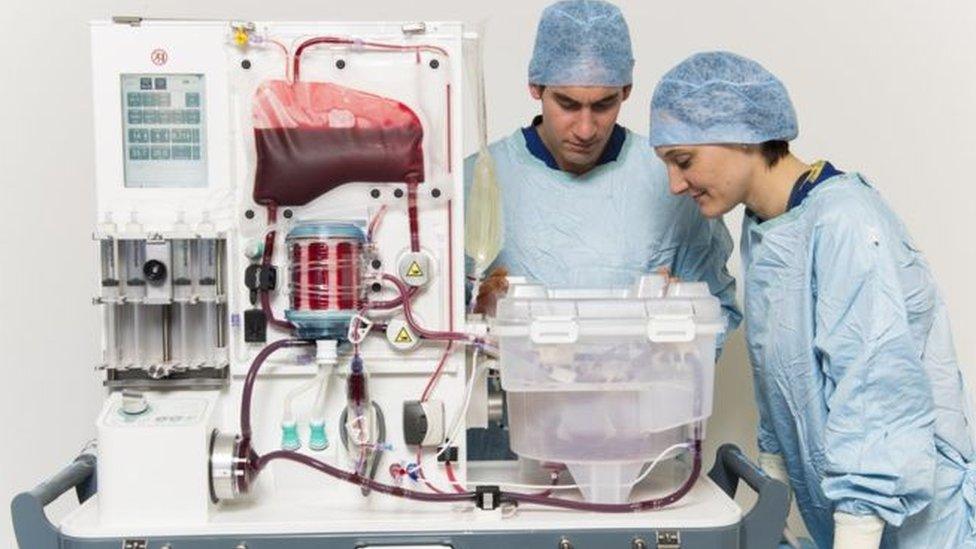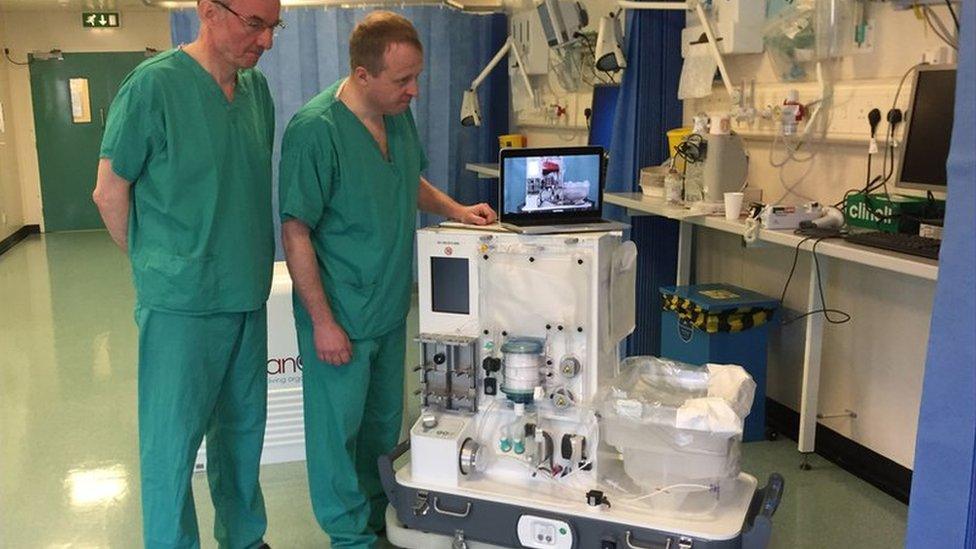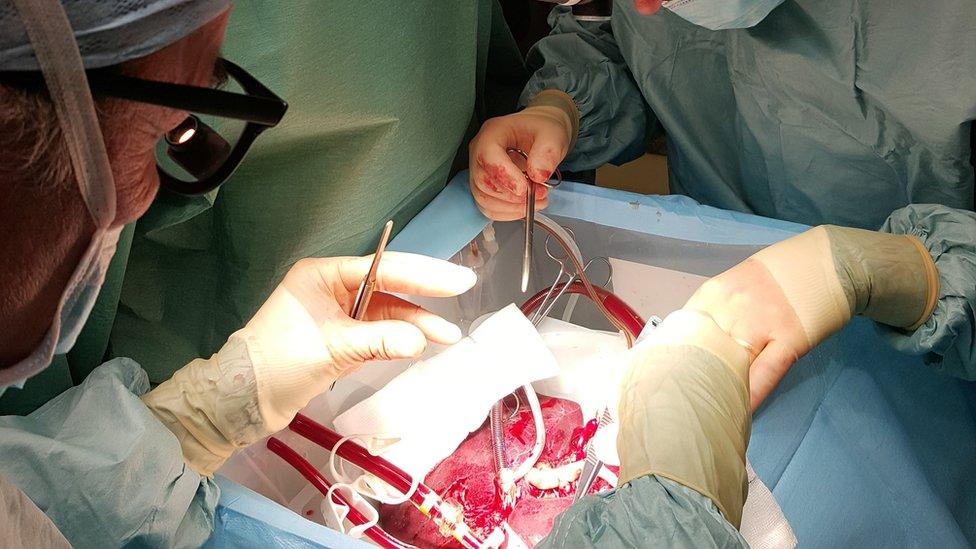Addenbrooke's to pioneer liver transplant technology
- Published

The perfusion machine mimics a transplant, keeping the liver warm
A hospital has become the first in the UK to bring state-of-the-art liver technology into routine use.
The "perfusion machine" at Addenbrooke's Hospital in Cambridge keeps a donor liver "alive" outside the body by pumping it with blood, nutrients and medicine.
Donor organs are normally stored in ice but many become damaged and unusable as a result, those behind the machine say.
The procedure could mean a further 54 liver transplants over two years.
The decision to acquire the machine comes 50 years' to the day since the first liver transplant in Europe was performed at the hospital.
Prof Sir Roy Calne, who led the pioneering operation on 2 May 1968 said it proved how far transplant technology had come.
"It is a big step and it will become a bigger step as more experience is accumulated on how to use the machine, and how much the machine can make a bad liver that's damaged better for transplantation," he said.

Prof Chris Watson (left) and surgeon Andrew Butler with the machine at Addenbrooke's
The technology was invented and developed over 20 years by scientists Prof Constantin Coussios and Prof Peter Friend at Oxford University.
Prof Chris Watson, a transplant consultant at Addenbrooke's, said perfusion can "mimic the transplant", supplying the organ with oxygenated blood and nutrients, and tests can check how it will function.

One in eight patients waiting for a liver dies without one, doctors say
It will be particularly useful for testing livers which may have been deemed too risky and unsuitable for transplant, and enable more patients to undergo the procedure, he said.
"Some livers are potentially usable, we just haven't got the confidence to know it's going to work first time. And it's got to work first time or the recipient dies.
"One in eight patients waiting for a liver dies without one. If we can reduce that, it will make a huge difference."
- Published10 April 2018

- Published15 March 2013
- Published13 April 2018